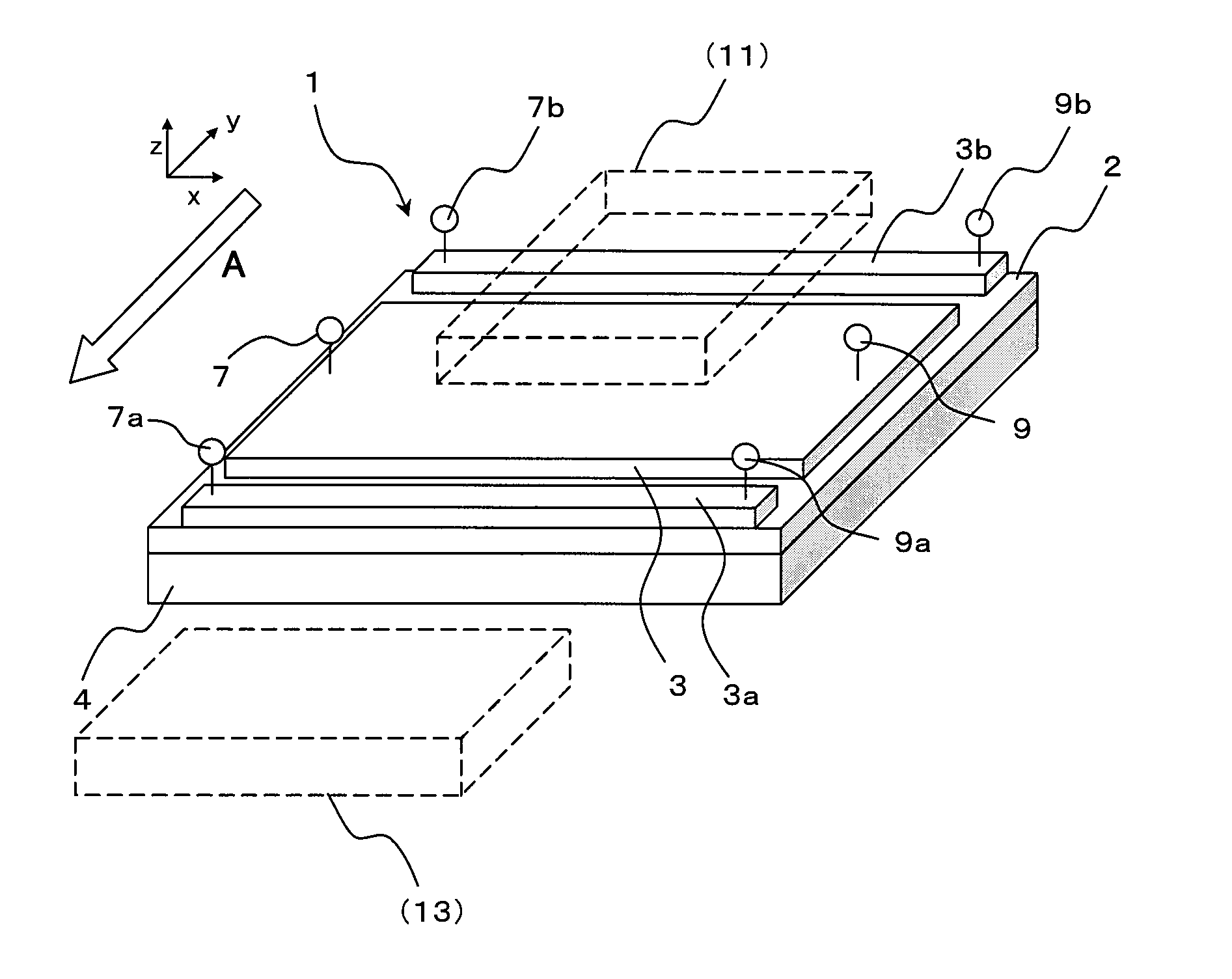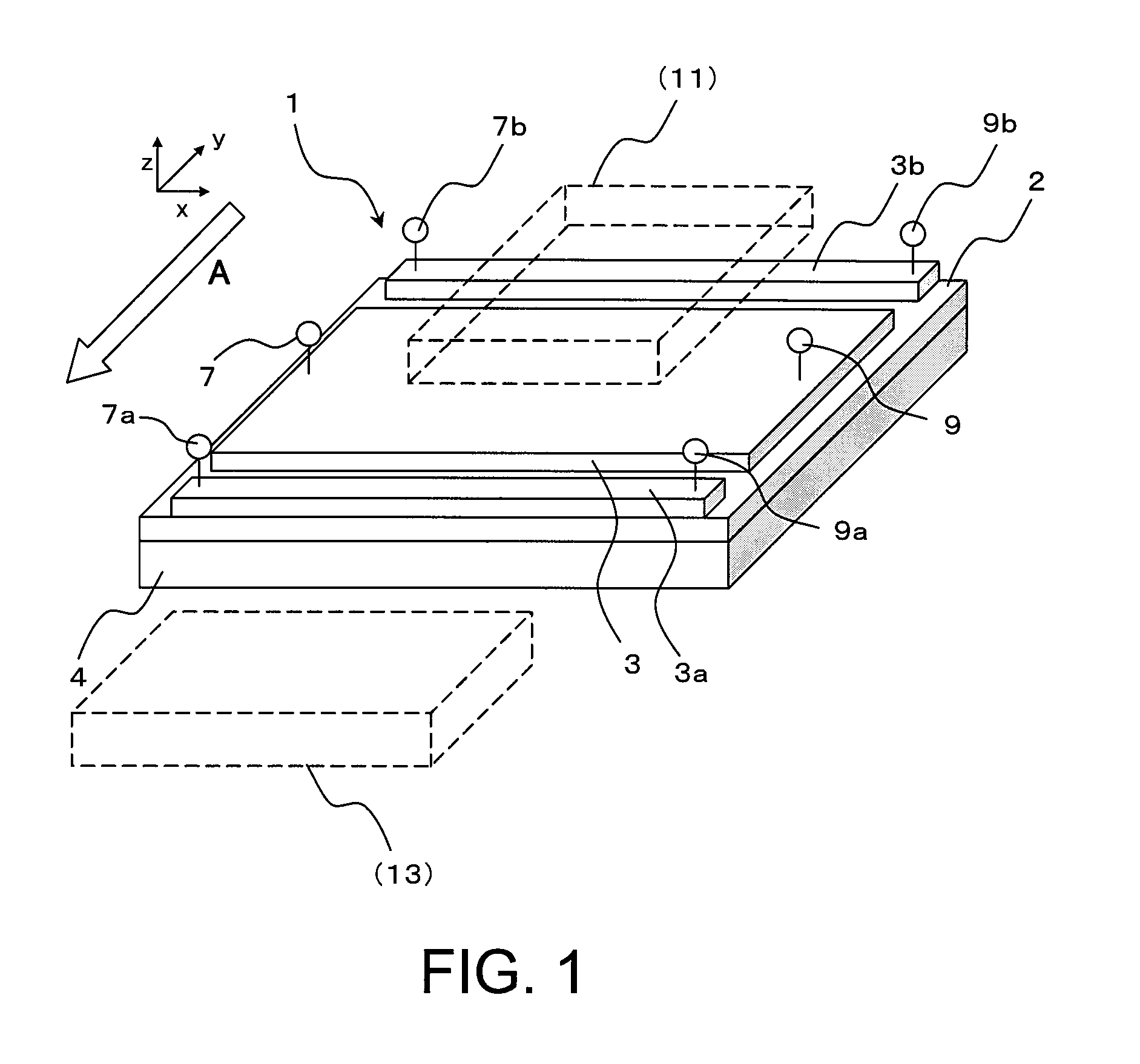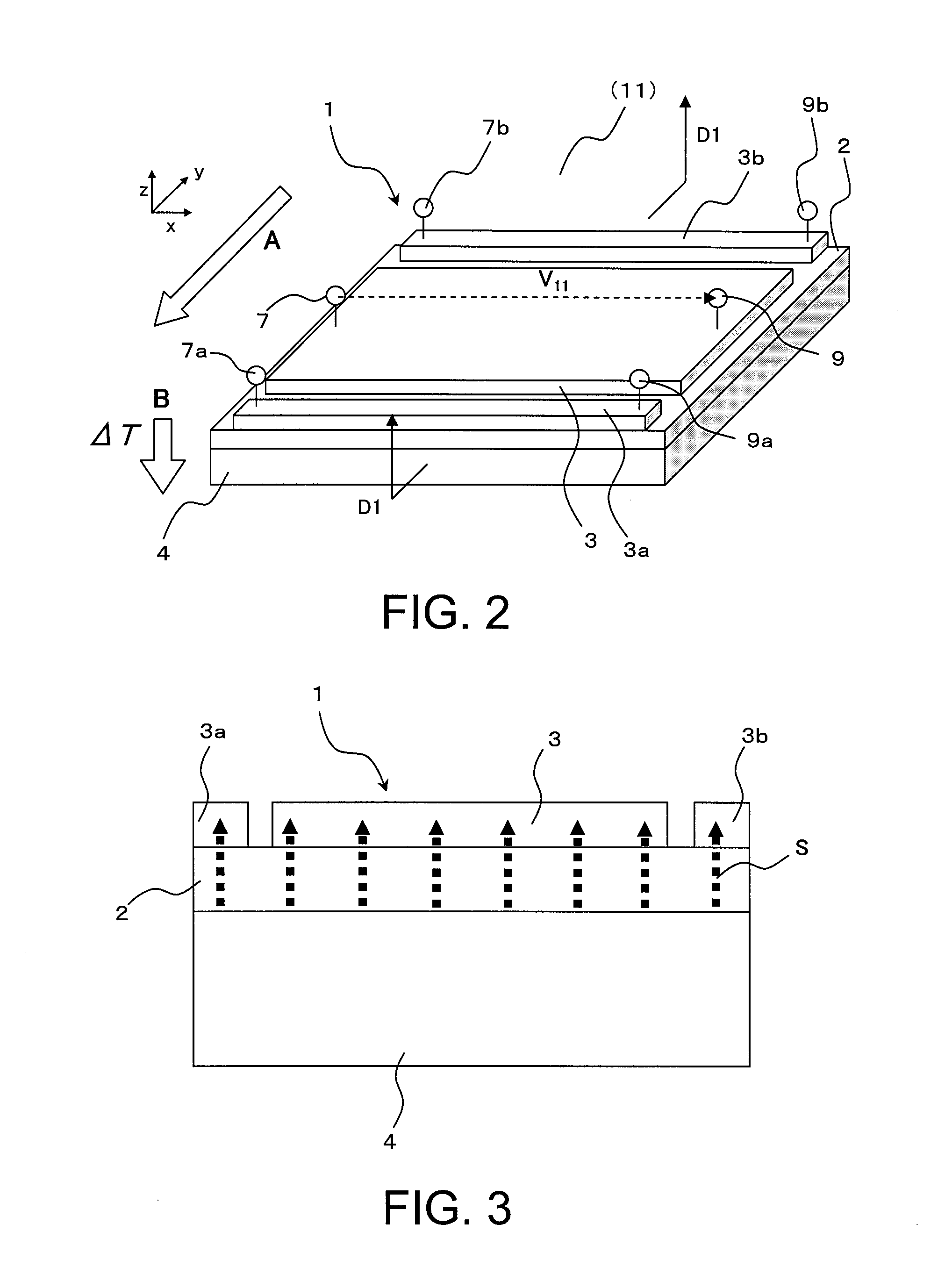Thermoelectric conversion element and thermoelectric conversion method
a conversion element and thermoelectric technology, applied in the direction of thermoelectric devices with peltier/seeback effect, thermoelectric device manufacturing/treatment, electrical apparatus, etc., can solve the problems of non-uniform in-plane temperature distribution in buildings, non-uniform heat generation in some portions, and inability of conventional thermoelectric conversion elements based on thermocouples to convert the temperature gradient in the in-plane direction of heat source into electric power,
- Summary
- Abstract
- Description
- Claims
- Application Information
AI Technical Summary
Benefits of technology
Problems solved by technology
Method used
Image
Examples
example 1
[0221]The thermoelectric conversion element 1 according to the first embodiment was manufactured. A specific procedure was as follows.
[0222]First, as the substrate 4, a (111) plane of a gadolinium gallium garnet (hereinafter referred to as “GGG”; a composition thereof was Gd3Ga5O12) substrate manufactured by Saint-Gobain K. K was used. As the magnetic film 2, an yttrium iron garnet film having a Y-site partially substituted by Bi (composition thereof was BiY2Fe5O12; hereinafter referred to as “Bi:YIG”) was used. For the electrodes 3, 3a, and 3b, Pt was used. In this case, a thickness of the GGG substrate was set to 0.7 mm, a thickness of the Bi:YIG film was set to 0.3 mm, and a thickness of the Pt electrode was set to 10 nm.
[0223]The Bi:YIG magnetic film 2 was formed by the aerosol deposition method. As a Bi:YIG raw material, Bi:YIG fine particles having a diameter of 300 nm were used. The Bi:YIG fine particles were stored in an aerosol generator container, and the GGG substrate was...
example 2
[0225]The thermoelectric conversion element 1a according to the second embodiment was manufactured. A specific procedure was as follows.
[0226]As the substrate 4a, a thermal conduction anisotropic substrate containing carbon fibers oriented in an epoxy resin as fillers was used. The carbon fibers were oriented in the direction perpendicular to plane with respect to the substrate, and had a high thermal conductivity in this direction.
[0227]As the magnetic film 2, a yttrium iron garnet film having a Y-site partially substituted by Bi (BiY2Fe5O12) was used. For the electrodes 3, 3a, and 3b, Pt was used. In this case, a thickness of the substrate 4a was set to 0.3 mm, a thickness of the Bi:YIG film was set to 0.1 mm, and a thickness of the Pt electrode was set to 10 nm.
[0228]The Bi:YIG magnetic film 2 was formed by the aerosol deposition method. As a Bi:YIG raw material, Bi:YIG fine particles having a diameter of 300 nm were used. The Bi:YIG fine particles were stored in an aerosol gener...
example 3
[0230]The thermoelectric conversion element 1b according to the third embodiment was manufactured. A specific procedure was as follows.
[0231]As the substrate 4b having an anisotropic thermal conduction characteristic, a polyimide substrate having a thickness of 0.3 mm, with a back surface on which cuts, each having a width of 0.1 mm and a depth of 0.2 mm, were formed, was used.
[0232]As the magnetic film 2, a Bi:YIG film was used. For the electrodes 3, 3a, and 3b, Pt was used. In this case, a thickness of the Bi:YIG film was set to 0.1 mm and a thickness of the Pt electrode was set to 10 nm.
[0233]The Bi:YIG magnetic film 2 was formed by the aerosol deposition method. As a Bi:YIG raw material, Bi:YIG fine particles having a diameter of 300 nm were used. The Bi:YIG fine particles were stored in an aerosol generator container, and the substrate 4b was fixed to a holder provided in a film-formation chamber. By generating a pressure difference between the film-formation chamber and the ae...
PUM
 Login to View More
Login to View More Abstract
Description
Claims
Application Information
 Login to View More
Login to View More - R&D
- Intellectual Property
- Life Sciences
- Materials
- Tech Scout
- Unparalleled Data Quality
- Higher Quality Content
- 60% Fewer Hallucinations
Browse by: Latest US Patents, China's latest patents, Technical Efficacy Thesaurus, Application Domain, Technology Topic, Popular Technical Reports.
© 2025 PatSnap. All rights reserved.Legal|Privacy policy|Modern Slavery Act Transparency Statement|Sitemap|About US| Contact US: help@patsnap.com



